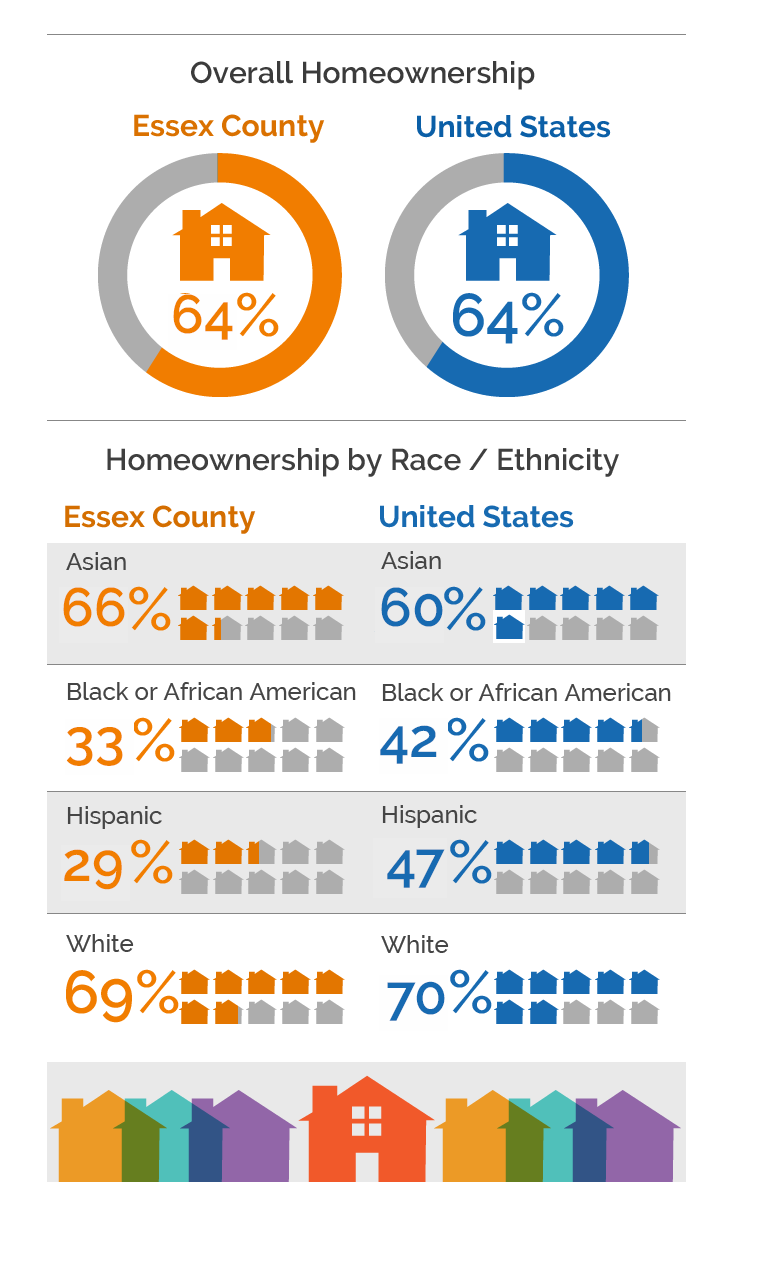Pandemic-related cost increases haven’t helped
The increasing costs of homeownership during and coming out of the COVID pandemic haven’t made owning a home in Essex County any easier. Since 2000, the median home value has increased 38% to $462,900. Essex remains an expensive place to live, both for homeowners and renters. For homeowners, affordability is assessed using a ratio of median home value to median income. Essex County’s ratio is 5.3, when 2-3 is considered affordable. For renters, rent is considered affordable if it takes up no more than 30% of income. In Essex County, renters are spending about 38% of their income on rent.

Who owns a home in Essex County?
Homeownership in Essex has been steady since 2000, with 64% of housing units occupied by owners. But in some local areas, and for some groups, homeownership is far less common. Only 29% of homes in Lawrence were owner-occupied in 2017-21, along with 48% in Lynn and 52% in Salem. Homeownership rates are 69% among white residents, but just 38% for African Americans and 31% for Hispanics. Essex County has the same or higher homeownership rates relative to the nation for white and Asian residents, but lower rates for African Americans and Hispanics.
Local zoning laws make it difficult to develop affordable and/or multi-family housing in some areas. Some towns allow only single-family homes on large lots, which limits housing supply and escalates costs. The Commonwealth enacted Chapter 40B in 1969 to mitigate this problem by setting a goal that 10 percent of housing inventory in each town or city is affordable. However, in Essex County, just 11 of 34 communities have met this goal: Amesbury, Andover, Beverly, Danvers, Georgetown, Lawrence, Lynn, Lynnfield, Salem, Salisbury and Wenham.

According to the official count, homelessness is actually abating somewhat in Essex County, but the City of Lynn is an exception. The rate of homelessness in Essex (excluding the cities of Lynn and Lawrence) fell to 11 per 10,000 residents in 2020, down from a high of 26 in 2015. In July 2015, the state of Massachusetts’ Department of Housing and Community Development (DHCD) launched a homelessness prevention initiative; early success in the program led to the scheduled closure of hotel-based shelters. By mid-2017, hotels - many located in Essex County - had stopped being contracted by the state family shelter system to serve as overflow facilities. However in Lynn, the rate has almost quadrupled since 2007 to a rate of 103 per 10,000 in 2020.
What factors drive homelessness?
Essex’s housing problems aren’t driven by an overall high poverty rate or low incomes, but it’s an expensive place to live. Estimates of the “living wage” required to afford basic necessities, including shelter, suggest that many families, particularly single-parent families, don’t make enough to make ends meet. For example, the annual income required for a single parent of 2 is estimated to be about $120,800. Compare that to the median income for female-headed households with children: $37,400.

In what ways is unstable housing impacting Essex County?
We don’t have data specific to the homeless or housing-insecure population to answer this question. But we know that physical health, mental health and educational performance are all affected. How Essex County can make safe, secure, affordable housing available to all residents remains a key challenge facing the community.